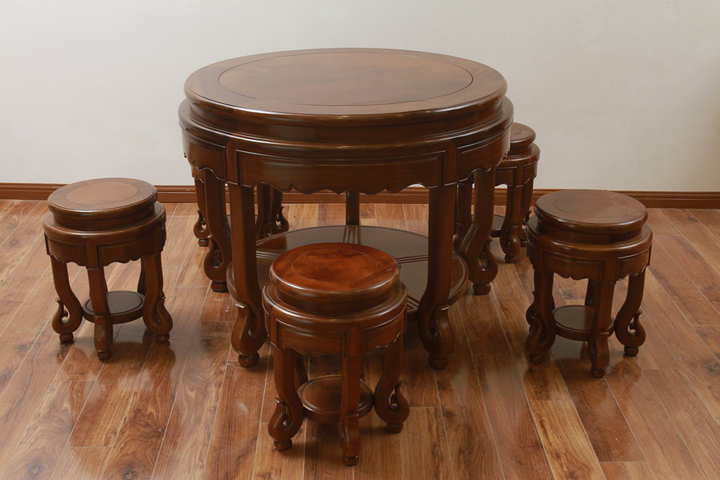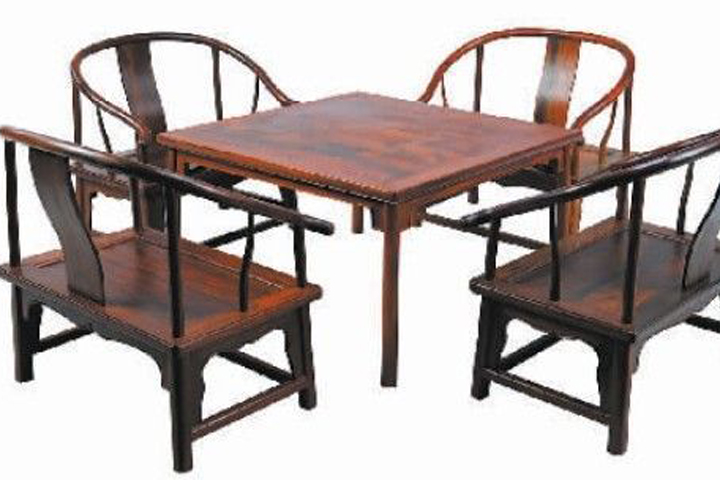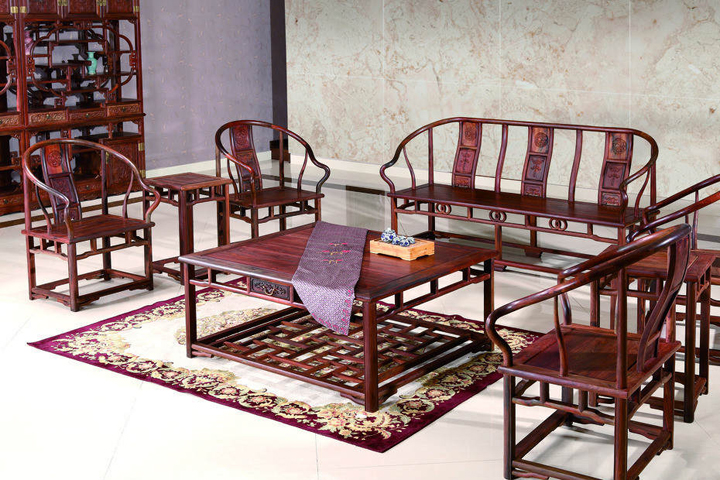Redwood furniture, black horses, high-end hardwoods, and overall price reduction pressure.

With its rare materials, elegant design, rich cultural significance, and potential for investment appreciation, mahogany furniture has become more than just a household item—it's a symbol of refined taste in modern life. It represents a longing for a noble and traditional lifestyle. While news about price fluctuations and market adjustments continues to circulate, in the Guangzhou market, mahogany furniture is still considered a rising star, showing promise despite the challenges.
**High-end hardwoods face overall price reduction pressure**

Recently, Fuzhou Customs uncovered the largest smuggling case of redwood timber in Chinese history, sparking renewed concern in the market. Since last year, there have been multiple reports of redwood smuggling incidents across the country. Many domestic timber traders have been caught misrepresenting high-grade wood as low-grade. These investigations have made mahogany dealers more cautious and inclined to follow formal procedures.
"If you follow the normal customs process, the tariff cost can account for up to 20% of the total cost, which inevitably increases the cost of imported wood," said one rosewood merchant in Zhongshan.
Additionally, Southeast Asian exporters such as Africa and Myanmar have imposed restrictions or even bans on the export of redwood. These factors are likely to push up the prices of mahogany furniture in the domestic market.
Recently, a well-known domestic mahogany brand, "Even Tianhong," announced an increase of nearly 5%–10% in the prices of almost all its products. However, some experts argue that the market's purchasing power may not keep up with these price hikes, so the rise might not be widespread.
Peng Jianchu, director of the Xiamen Furniture Professional Committee of the Fujian Collectors Association, stated that the current terminal market for mahogany furniture is still in a downturn. Those who previously invested heavily in goods are now under financial pressure, which could lead to further price reductions. Last year, due to restrictions on timber imports, mahogany wood experienced a surge in prices. Now, with a large volume of finished products entering the market, it is expected that the prices of mahogany furniture will decline.
"In addition to high-end mahogany, which remains expensive due to its scarcity, the overall price of mahogany wood is currently in a downward adjustment period," said Liu Yu, general manager of Zhongshan Yiguxuan Home. He noted that during the off-season, there are many sources of supply in the ordinary timber market, such as East African black Dalbergia, African rosewood, and Burmese rosewood, which have seen declines of 5% to 15%.
**The price of overcast wood is higher than that of red rosewood**

Hainan huanghuali, Vietnamese huanghuali, and lobular rosewood furniture have seen their original materials exhausted, with even old and small pieces becoming rare. Laotian Siamese rosewood has also experienced a sharp price increase in recent years, reaching a peak last year. The reporter learned from the fish bead timber market that with the overall cooling of the mahogany furniture market, it is difficult for this material to maintain its position as a market leader. Large-diameter grade materials are often too expensive for buyers.
Currently, the main sales force is still short-term, but trading volumes remain low, and the market is experiencing a lack of clear pricing. Materials that reached 300,000 yuan per ton last year are now priced at around 190,000–200,000 yuan per ton, while common specifications of 15–25 cm are priced at approximately 140,000–170,000 yuan per ton.
However, the price of overcast wood has remained stable. In the high-end Meijuju flower world, Ming-style four-headed official hat chairs and ring chairs are priced at 80,000 yuan (two chairs and a few), which is significantly higher than the price of laohong red rosewood. The material used is Gemu, also known as ironwood, which is an endangered species and a national level II protected wild plant. Its hardness, resistance to corrosion, and water resistance make it ideal for shipbuilding, cutting, and furniture. The unique pattern formed by the cross-section tube holes and thin-walled tissue resembles deep-sea fish, making it visually striking. The uniform structure is perfect for car turning, producing beautiful spinning products.
The Zhenwu Pavilion in Rongxian County of Guangxi, built in 1573, was constructed entirely from Gemu and has remained intact for over 410 years, demonstrating the durability of this material.
The reporter saw the original wood in the store, which had already been carbonized. Testing revealed that these wooden products were buried underwater during the Song and Yuan Dynasties. They are complete in material, without any joints, with square and smooth shapes, typical Su Zuo products. The craftsmanship is extremely meticulous, reflecting the refined and elegant temperament of literati, a leisurely expression, and a delicate and elegant scholarly atmosphere. The exquisite techniques of the craftsmen convey a sense of natural harmony and expressiveness.
**A lot of the best of the golden nanmu**
The collection industry has always been rare. Since the Qing Dynasty, after the Wenchuan earthquake, there have been more than 200 years of generations. It is rumored that the earthquake exposed the original Nansi buried underground. Classical Jinsi Nanmu furniture, which had disappeared for hundreds of years, reappeared in rivers and lakes, attracting a hot market and causing a rush to collect. Some collectors have sold their long-collected redwood and rosewood furniture to invest in Jinsi Nanmu furniture. According to experts, gold nanmu is hard to find, yet in Guangzhou furniture stores, many shops are selling gold silk wood furniture. For example, Panyu Jisheng Weibang's Jinsi Nanmu Impression Experience Hall and Guangzhou Yingchuange Jinsi Nanmu Furniture Art Museum, among others in Fangcun, sell five or six pieces of furniture. These stores have been open since 2012, and Jinsi Nanmu has re-emerged from the rivers and lakes, quickly occupying the market, becoming the new favorite of China’s luxury furniture. Even if many people don’t understand it, it has become a dark horse in the traditional Chinese classical furniture market in just over a year, with prices soaring rapidly.
The reporter saw a series of gold nanmu products in Zhiding Yipin, including double-wooden cabinets, which are more common gold nanmu. The panel of a pair of top cabinets is the best of the golden nanmu, with a clear tiger skin pattern on the surface. There is also a carved dragon palace chair, where the frame uses ordinary ebony, but the back and seat are gold nanmu, especially the seat surface, which has the best tiger skin, with a slightly lower price than grid wood. In Yingchuan Pavilion, there are many Jinsi Nanmu furniture items, and they are not matched with ebony, but instead use the same texture called water ripple, and are made into paintings for sale.
According to the reporter's understanding, there is no such tree as the nanmu tree. The mother tree is usually Phoebe bournei (small leaf, big leaf). After being hunted for hundreds of years (usually 500 years), only 1% of it is oxidized and alcoholized. About 5% may form nanmu. The value and price of nanmu are judged by the industry. Merchants generally say that the key to price is the "crystallization rate," that is, the amount of "gold wire" in the wood. What proportion of crystallization can be called "Golden Nan," the country does not have relevant standards and regulations.
In *Dream of the Red Chamber*, the color of the nanmu is described as "colors such as betel nut, fragrant sapphire, and knocking like gold jade." However, the reporter checked the information. Since the Qin Dynasty, Jinsi Nanmu has been used for royal royalties and monopolies. The common people were not allowed to use it; otherwise, it would be considered a sin against the ritual system. Historical records show that more than 20 officials of the Ming and Qing Dynasties were punished for privately owning sapphire, with some facing execution. The Ministry of Internal Affairs once had strict standards for golden nanmu: old materials with a diameter of 75 cm or more, trees aged over 500 years, and gold wire content of 80% or more. Regardless of the standards, these furnishings are not just everyday tools—they are works of art. In terms of aesthetics, they embody the long-standing culture of the Chinese nation and the summary of historical and traditional aesthetics. It is because of its uniqueness, rarity, and other characteristics that it has been deeply cherished and loved by the people of China and the world. It deserves to be one of the oldest luxury goods in history.
Double Row Broom Rack Storage Rack
Double Row Broom Rack Storage Rack,Double Row Stainless Steel Storage Rack,Double Row Storage Rack,Multi Functional Home Storage Rack
Yongkang Daluo Industry and Trade Co., Ltd , https://en.daluo.ru